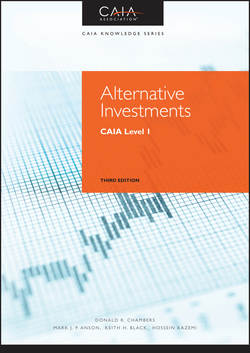Читать книгу Alternative Investments - Hossein Kazemi - Страница 45
На сайте Литреса книга снята с продажи.
PART One
Introduction to Alternative Investments
CHAPTER 3
Quantitative Foundations
3.4 Problems with Internal Rate of Return
3.4.2 Comparing Investments Based on IRRs
ОглавлениеThe previous section reviewed the difficulties of computing and interpreting IRRs when an investment offers a complex cash flow stream. But even if the investments being analyzed offer simplified cash flow streams (a cash outflow followed only by cash inflows), the IRR method of measuring investment performance has serious challenges. This section details the major challenges of comparing investments based on IRR.
The major challenge with comparing IRRs across investments occurs when investments have scale differences. Scale differences are when investments have unequal sizes and/or timing of their cash flows. When comparing investments with different scales, an investment with a higher IRR may be inferior to an investment with a lower IRR.
The following is a simple example that illustrates the problems that occur when comparing IRRs. Assume that a bank is offering high initial yields on a limited-time basis to induce investors to open a new account. Investors are allowed to open only one account. The example includes three types of accounts, each with the following interest rates and restrictions on time and amount:
■ Account Type A: Receive 100 % annualized interest for the first day on the first $10,000.
■ Account Type B: Receive 100 % annualized interest for the first year on up to $10.
■ Account Type C: Receive 20 % annualized interest for the first year on up to $10,000.
The IRR of alternatives A and B is 100 %, whereas the IRR of alternative C is only 20 %. However, alternative A has very small scale due to a time limitation of one day (timing), and alternative B has very small scale due to a cash flow size limitation of $10 (size). If annualized market interest rates are 5 %, alternative A has a net present value of less than $30, and alternative B has an NPV of less than $10. Alternative C has an NPV of about $1,500, even though its IRR is only one-fifth that of the other two alternatives. The reason for this is that although all three alternatives have favorable IRRs, alternative C has much larger scale.
In this example, it is better to receive a lower rate on a large scale. In actual investing, scale differentials can be complex and subtle. In judging when a larger scale is worth a sacrifice in return, approaches to investments using the NPV method offer substantial potential in evaluating investment opportunities of different scales. But in alternative investments, especially private equity, IRR is the standard methodology, and scale differentials represent a challenge in ranking performance.
